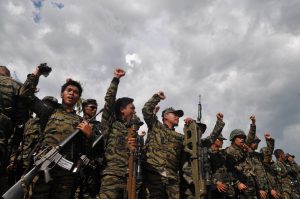There is nothing harder than a peace process after decades of intractable civil war. Even when the two sides decide that there’s nothing more to be gained from continued fighting and that the only way out is a negotiated political solution, there are vested interests, hardliners who see negotiation as tantamount to surrender, advocates for widows and children, security forces that fear the loss of budgets and billets, and legislators or rival politicians who feel that any form of autonomy is the first step toward secession.
Even after all of those spoilers, hardliners, and skeptics have been mollified, neutralized, or co-opted, the peace process must actually be implemented. This is one of the most misunderstood components of any peace process. After the fanfare of the peace process signing ceremony, the agreement has to be carried out; core components have to be reconciled within the constitution and national legal framework. It is at that stage, where the rebels are really at a disadvantage, that the agreement becomes diluted. Weapons and soldiers have to be decommissioned and demobilized in a region that is already struggling with weak governance, the lack of rule of law, and little faith in nascent government institutions. Even if civil wars do not occur in the poorest parts of the country, the legacy of protracted conflict ensures that the conflict region is saddled with the lowest human development indicators.
So much can go wrong that when a peace process goes well, one has to take notice.
The implementation of the peace agreement between the Moro Islamic Liberation Front (MILF) and the government of the Republic of the Philippines has passed its first year anniversary. Spoilers abound on all sides, and the Philippine government has a track record of backsliding on implementation. And yet, the newly established Bangsamoro Autonomous Region of Muslim Mindanao (BARMM) has survived its first year. It has not been without challenges, but there have been no major reversals, either. There is a long way to go, but for a war-torn region, this is a very positive development. For the governments of Southeast Asia, which have long viewed Mindanao as a font for their own terrorist concerns, a lasting peace in Mindanao will do much to improve the lack of governance and chronic insecurity that served as a magnet for extremists.

































